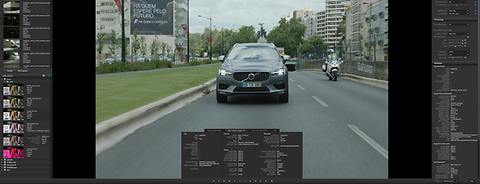When viewed directly, Log C footage looks flat with desaturated colors, LogC4 might seem underexposed. To get an image with a grayscale characteristic and color reproduction that is visually correct, the Log C footage must be tone-mapped and transformed into the target color space. This conversion can be applied with a 3D Look Up Table (LUT). A one-dimensional LUT can take care of the tone-mapping, so the resulting image will at least have a grayscale characteristic suitable for display. The transform into the target color space, however, requires a 3D LUT. This type of LUT contains both, the grayscale and the color transformation.
In the grading application, the LUT is applied for the viewing/output path. The color correction is applied on the Log C image beforehand; the result of this operation is converted into the target color space using the corresponding LUT.
